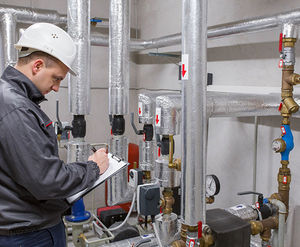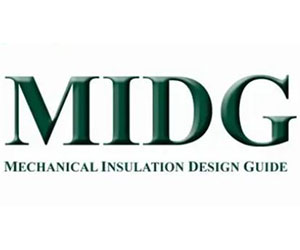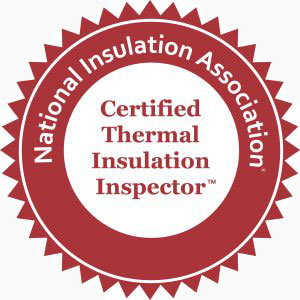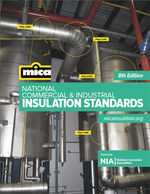Author: Thomas MacKinnon, Demand Generation Manager, Armacell LLC and member of NIA Technical Information Committee and the U.S. Technical Advisory Group to ISO TC163. Original and full article can be found at: https://insulation.org/io/articles/what-engineers-need-to-know-and-where-support-can-be-found/
 Design engineers need to maintain significant knowledge of many different parts of the systems they design in order to successfully meet required criteria within specified budgets. With all the different elements to keep in mind, insulation may not be at the top of the list when designing training programs for engineers. NIA understands this and works with its partners to provide numerous training opportunities for both new engineers and those looking to grow their knowledge base. The benefits of such training extend to the other members of the project chain, such as the contractors and installers, ensuring that there is consistency from the design process through the bid and final installation. With all of the resources offered by NIA, engineers can grow confident in their design choices, knowing that their systems will be able to reap all the benefits of mechanical insulation.
Design engineers need to maintain significant knowledge of many different parts of the systems they design in order to successfully meet required criteria within specified budgets. With all the different elements to keep in mind, insulation may not be at the top of the list when designing training programs for engineers. NIA understands this and works with its partners to provide numerous training opportunities for both new engineers and those looking to grow their knowledge base. The benefits of such training extend to the other members of the project chain, such as the contractors and installers, ensuring that there is consistency from the design process through the bid and final installation. With all of the resources offered by NIA, engineers can grow confident in their design choices, knowing that their systems will be able to reap all the benefits of mechanical insulation.
Initial Training for Engineers New to Insulation
 Mechanical Insulation Design Guide (MIDG) and e-Learning Modules—These online tools are free gifts to assist in system design. The modules include five introductory training classes and quizzes on a range of topics including the science behind mechanical insulation, its benefits, types of products, and design considerations to assist those new to the mechanical insulation field. The program offers 2.0 PDH credits and is a great way for new engineers to learn about mechanical insulation at their own pace. The MIDG website walks you through a series of questions and assists with design calculations to create a proper insulation system. You can even determine the project ROI. Both are found at www.Insulation.org.
Mechanical Insulation Design Guide (MIDG) and e-Learning Modules—These online tools are free gifts to assist in system design. The modules include five introductory training classes and quizzes on a range of topics including the science behind mechanical insulation, its benefits, types of products, and design considerations to assist those new to the mechanical insulation field. The program offers 2.0 PDH credits and is a great way for new engineers to learn about mechanical insulation at their own pace. The MIDG website walks you through a series of questions and assists with design calculations to create a proper insulation system. You can even determine the project ROI. Both are found at www.Insulation.org. Mechanical Insulation Samples—NIA offers the “NIA Insulation Sampler,” featuring 20 generic mechanical insulation product types and accessories, allowing engineers to become familiar with the common mechanical insulation types they will come across in their work and understand the differences between them in a tangible way.
Mechanical Insulation Samples—NIA offers the “NIA Insulation Sampler,” featuring 20 generic mechanical insulation product types and accessories, allowing engineers to become familiar with the common mechanical insulation types they will come across in their work and understand the differences between them in a tangible way.- Specification Resources—For ease of understanding the standards and specification requirements that pertain to mechanical insulation, NIA maintains several resources:
• The “Insulation Materials Specification Chart” outlines the different ASTM materials specifications and the properties each of the various materials must meet.
• The “Guide to Insulation Product Specifications” is a comprehensive list of all current ASTM, federal, and military specifications relevant to the mechanical insulation industry that should be considered for use in the engineer’s design.
• The “Insulation Science Glossary” contains a list of basic and advanced insulation industry terms and definitions, updated quarterly by NIA. - Job-Site Inspection—Seeing the application of mechanical insulation firsthand takes all of the theoretical training listed above and puts its importance in context with the rest of the systems. Whether going for a quality inspection during or after installation, or to investigate the final installation, engineers new to mechanical insulation will benefit greatly by seeing it for themselves or joining a NIA Certified Insulation Inspector.
Continuous or Advanced Training for Engineers
- Insulation Manufacturer Presentations—Numerous mechanical insulation manufacturers hold both in-person and virtual presentations to update the audience about specific technical issues or changes pertaining to insulation. Attendance at these presentations usually comes with PDH or other professional credit and will ensure that engineers stay at the forefront of insulation technology and applications.
 NIA Training Programs—NIA specifically offers advanced training and certification for those looking to increase their knowledge and ability to construct and enforce effective specifications. The NIA Thermal Insulation Inspector Certification™ educates participants on proper inspection techniques and how to verify that the materials and installation have been performed to the specifications. The 2-part course starts with a comprehensive look at the mechanical insulation industry’s markets, products, accessories, and need for proper inspection in the NIA Introduction to Mechanical Insulation. The second part dives into the roles and responsibilities of the inspector in the NIA Thermal Insulation Inspector Certification course. The NIA Understanding Specifications for Insulation Course overviews the development process and interpretation of specifications by reviewing the different elements of the specification and the consequences of poorly written specifications.
NIA Training Programs—NIA specifically offers advanced training and certification for those looking to increase their knowledge and ability to construct and enforce effective specifications. The NIA Thermal Insulation Inspector Certification™ educates participants on proper inspection techniques and how to verify that the materials and installation have been performed to the specifications. The 2-part course starts with a comprehensive look at the mechanical insulation industry’s markets, products, accessories, and need for proper inspection in the NIA Introduction to Mechanical Insulation. The second part dives into the roles and responsibilities of the inspector in the NIA Thermal Insulation Inspector Certification course. The NIA Understanding Specifications for Insulation Course overviews the development process and interpretation of specifications by reviewing the different elements of the specification and the consequences of poorly written specifications.- Local Technical Reps—Manufacturers have groups of technical representatives, located across the country, ready to help with all of your product, application, and specification questions to ensure that you are fully up to date with any code or standards changes. To find your local representative, visit the manufacturer’s website or contact the firm’s technical department.
 MICA Standards Manual—The Midwest Insulation Contractors Association (MICA) publishes the National Commercial & Industrial Insulation Standards manual outlining the proper installation process for different insulation materials. A helpful resource for engineers, contractors, and all industry professionals, it allows all members to speak the same language when it comes to insulation specification and installation, and greatly reduces the chance of miscommunication or unintended consequences.
MICA Standards Manual—The Midwest Insulation Contractors Association (MICA) publishes the National Commercial & Industrial Insulation Standards manual outlining the proper installation process for different insulation materials. A helpful resource for engineers, contractors, and all industry professionals, it allows all members to speak the same language when it comes to insulation specification and installation, and greatly reduces the chance of miscommunication or unintended consequences.
NIA offers several additional resources to assist mechanical engineers in their insulation efforts. Go to http://www.Insulation.org to find additional articles and blogs, further design guides—such as the Mechanical Insulation Design Guide (MIDG)—insulation application calculators, and much more.
